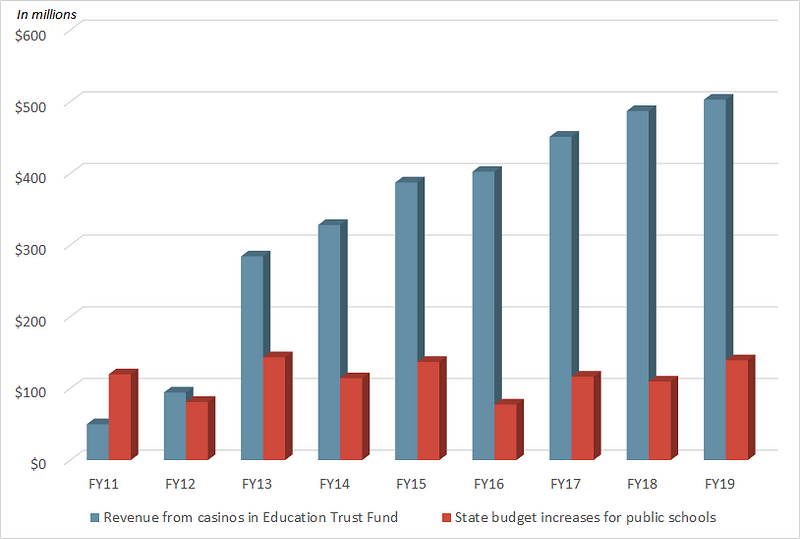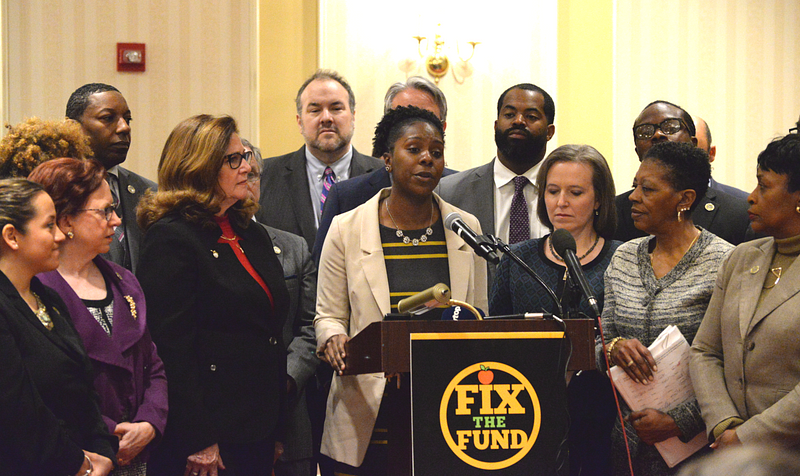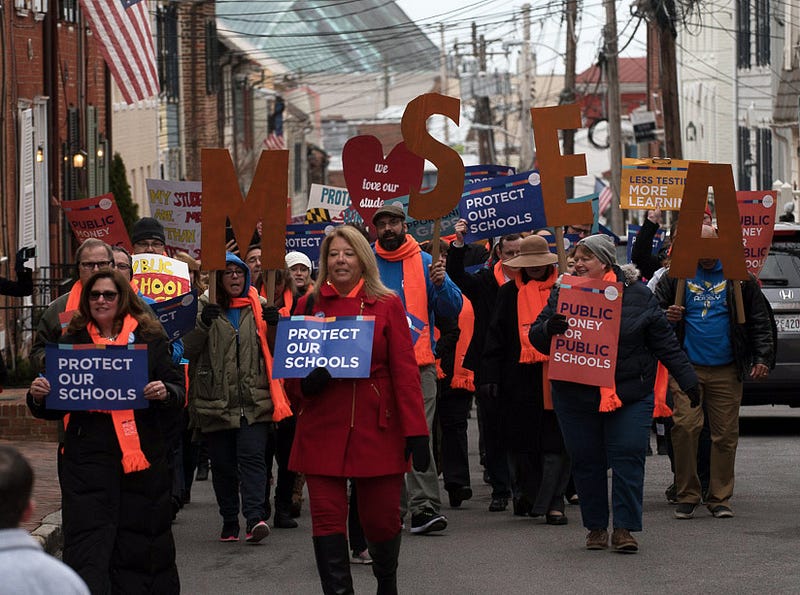Where Did the Gambling Money Go?
It’s time to close the school funding gap.

In 2008, Maryland voters approved casino gambling at the ballot box. And in 2012, Marylanders approved the expansion of gambling into table games. Many people cast their votes in favor believing that it would lead to dramatic increases in public school funding.
That hasn’t happened.

The Education Trust Fund (ETF) has collected nearly $3 billion in revenue from gaming (the blue bars), but school funding (the red bars) has only increased by about $1 billion during the same time. The vast majority of those increases were dictated by the state funding formula and driven by increased enrollment and inflation.
So how did this happen? Funding for public schools comes from two sources: the general fund (paid for by things like income and sales taxes) and the ETF (paid for by taxes on casino operators’ earnings). All the money in the ETF went to public schools…but an equivalent amount of general fund money that had been going to schools was then redirected to other programs. The end result: instead of dramatically improving, school funding tread water.

Funding from the first couple years of the ETF during the Great Recession helped to prevent the kinds of deep cuts and layoffs that other states experienced. But as the economy recovered, casino revenue skyrocketed while school funding ticked up at a much lower rate. During the Hogan Administration alone, more than $1 billion in the Education Trust Fund that could have gone to increasing school funding has been diverted elsewhere. As a consequence, the teacher to student ratio increased, educator salaries dropped compared to similar highly-skilled professions, and student learning suffered as opportunity gaps persisted and expanded.
It’s Time to Fix the Fund

We know that our schools are underfunded by $2.9 billion annually, according to an independent analysis. Fixing the fund — making sure that 100% of the money in the ETF actually increases school funding — is the first step in closing that underfunding gap. Budget analysts project that fixing the fund could result in $500 million in additional school funding annually.
The next step will happen during the 2019 General Assembly session when legislators adopt a new school funding formula to address the underfunding and take critical steps like improving educator pay, increasing staffing, and expanding early childhood education.
Ready to Help?

On March 19, we’re holding a March to Fix the Fund in Annapolis at 6 p.m. Come to fight for more school funding and make sure that all gaming proceeds actually, finally, go to increasing school funding. Click here to learn more and RSVP.

